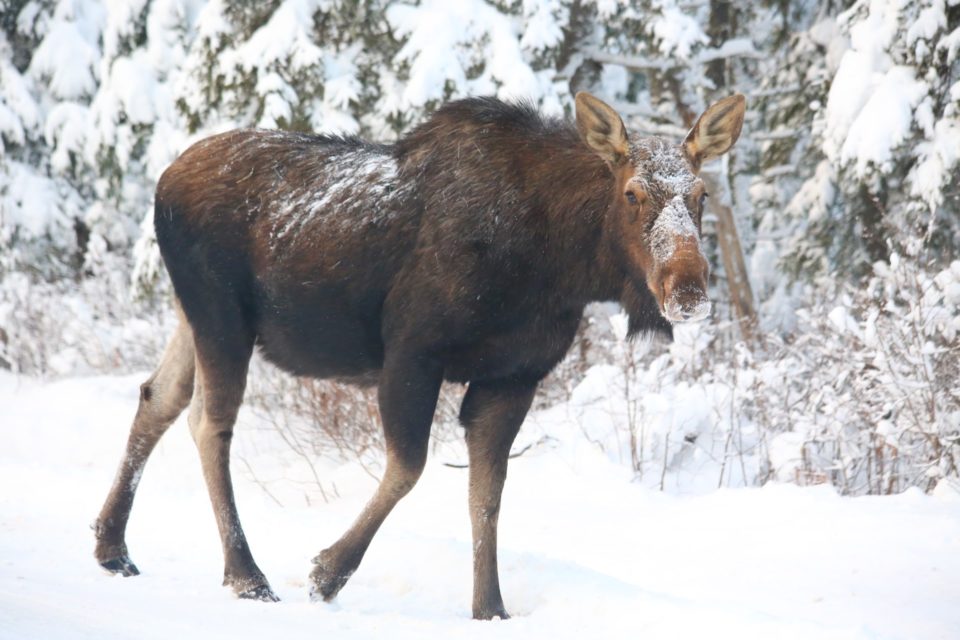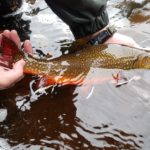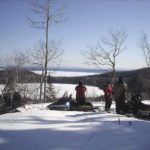Along with the new year, Minnesota received a new Governor, Tim Walz, who appointed a new commissioner of the state Department of Natural Resources, Sarah Strommen. Walz, who grew up in rural Nebraska and hails from Mankato, is said by pundits to have an affinity for the concerns and issues of “Greater Minnesota” (wherever that is). We’ll see.
Strommen, who joined the DNR administration in 2015 as an assistant commissioner under outgoing commissioner Tom Landwehr, has a strong resume in administration and natural resources policy. She is the first woman to lead the agency. It’s about time.
The DNR is perpetually challenged with thorny, divisive issues, which is to be expected in a state blessed with an abundance of natural resources and a citizenry passionate about the outdoors. The big DNR issues—Chronic Wasting Disease, copper mining, Mille Lacs walleyes—tend to suck the air out of the room, perhaps distracting us from the meat-and-potatoes of ongoing resource management. But the meat-and-potatoes work is what matters most to the average hunting and fishing license buyer and directly affects their outdoor experiences.
The DNR, especially the Wildlife Section, has been criticized for focusing more on the state’s agricultural region rather than the northern forest. The agency’s rationale is that habitat loss due to intensive agricultural land use requires more management efforts, while the forest habitat in the north largely stays the same. This is true, but the northern forest and the wildlife it supports are not static. Right now, many species seem to be on a downward trend.
The poster child for this trend is the moose, which largely disappeared from northwestern Minnesota about 20 years ago and has declined precipitously in the northeast since then. The state ended its annual moose hunt in 2013. Years of research to determine causes of the decline and how to turn it around has resulted in reams of data but little direct action—such as habitat management—on the ground. Moose remain far less abundant than they used to be.
Deer hunters still head into the woods every autumn, but in some places, such as the vast forests north and east of Duluth, they’ve seen few, if any deer in recent years. After a decade of abundance in the early 2000s, a series of deep-snow winters caused the whitetail population to crash. Recovery has been slow. While hunters frequently blame wolf predation or a liberal allocation of antlerless permits for suppressing whitetail numbers, one must also factor in continued tough winters and, more importantly, aging forest habitat. It should be noted that a dearth of deer in this area during the early 70s led wildlife managers to revamp deer hunting seasons and regulations to restore and to some extent stabilize the whitetail population. While the present drop in deer numbers is less dire, it is difficult to see how the DNR will reach its hunting harvest goals without having a few more whitetails in the Arrowhead’s woods.
The ruffed grouse is the state’s most abundant native game bird. Minnesota is said to have the best grouse hunting in the nation. Wildlife managers are presently stymied by hunter reports of finding few grouse during fall hunts, especially because the birds are supposed to be near a 10-year cyclic high. Researchers are attempting to determine if the birds are affected by West Nile Virus, a disease fatal to birds. Some hunters speculate cold and unusually wet weather during recent June’s may have diminished nesting success. Since ruffed grouse populations rise and fall on a well-documented 10-year cycle, it may take a decade or more to figure out if the birds are truly in trouble.
The northeastern population of another native grouse, the sharptail, is in decline as well. Sharptails are prairie birds inhabiting the forest’s edge. They gained a foothold in the north about a century ago, when settlers began farming land that had been cleared during the initial logging era. Since then, the forest has reclaimed most of the open ground, leaving sharptails with greatly diminished habitat. Ongoing brushing and burning are required to maintain the large openings necessary for the birds to persist. That necessitates continued attention from wildlife managers and funding allocations adequate to do the work.
Another forest species that is far less abundant than it used to be is the black bear. The DNR estimates the bear population in the northern forest may be half of what it was a couple of decades ago. Despite significant cutbacks in lottery-issued hunting permits, the bears have been slow to recover. Aside from curtailing hunting, which isn’t likely to happen, there’s probably little wildlife managers can do to boost bear numbers.
Trappers have experienced the rise and fall of marten and fisher populations. In 2018, they had a short, five-day season for the two species, with a combined limit of two. An increasing bobcat population is believed to play a role in the fisher population decline. In some areas, a lack of mature trees for nesting cavities is thought to have affected marten abundance. Again, there is no easy management answer to make either species more numerous.
It would be handy if we could wrap up all of the Minnesota wildlife declines with a tidy bow and then demand the DNR “do something” to address them. The problem is a quick fix doesn’t exist. However, by looking at all the declines collectively, it does become apparent that someone, somewhere, is asleep at the wheel, because northern wildlife does appear to be suffering from benign neglect. If we couple this thought with the reality of the massive downsizing in the north’s timber harvest (harvesting creates young forest habitat) that has occurred since the great recession, it becomes apparent the northern forest and its wildlife are heading toward a new normal. Hunters may be entering an era of nostalgia for what used to be.
Instead of placing blame on the DNR, wolves, hunting organizations or some other target, it may be more productive to instead ask: How do we move forward? Right now, no one seems to have acknowledged we may have a problem, much less considered how to address it.




